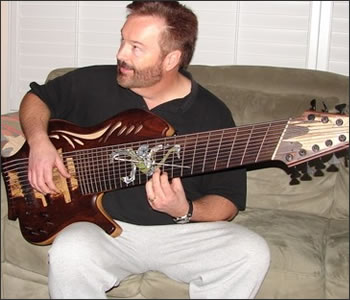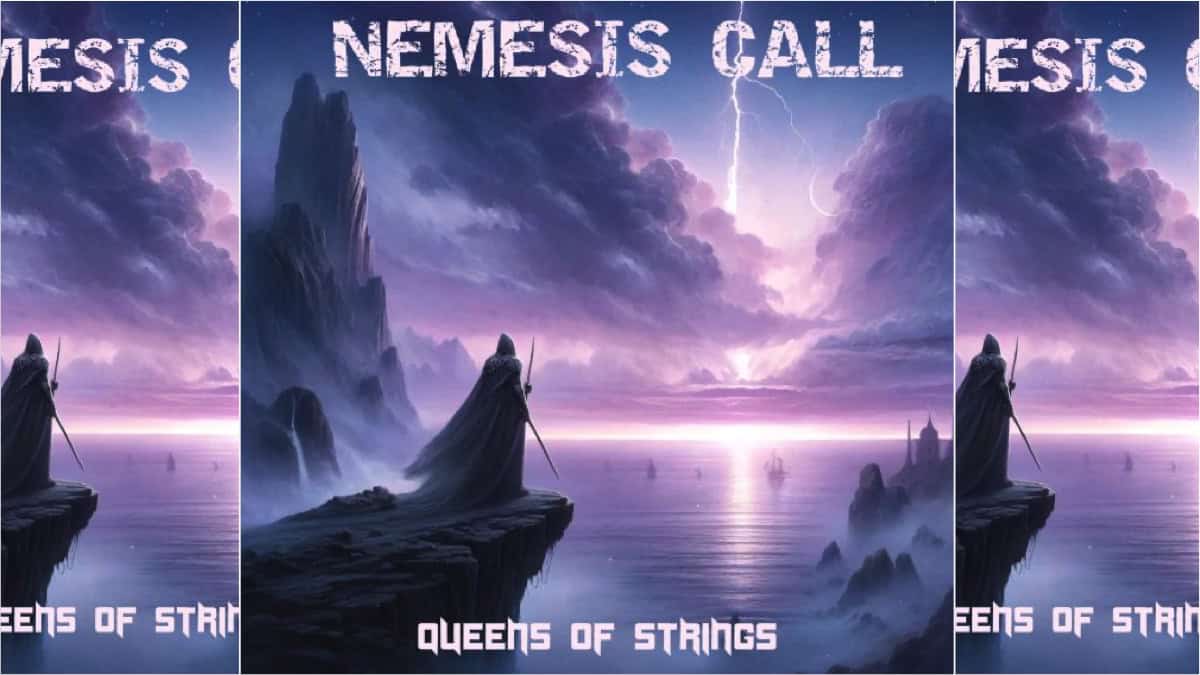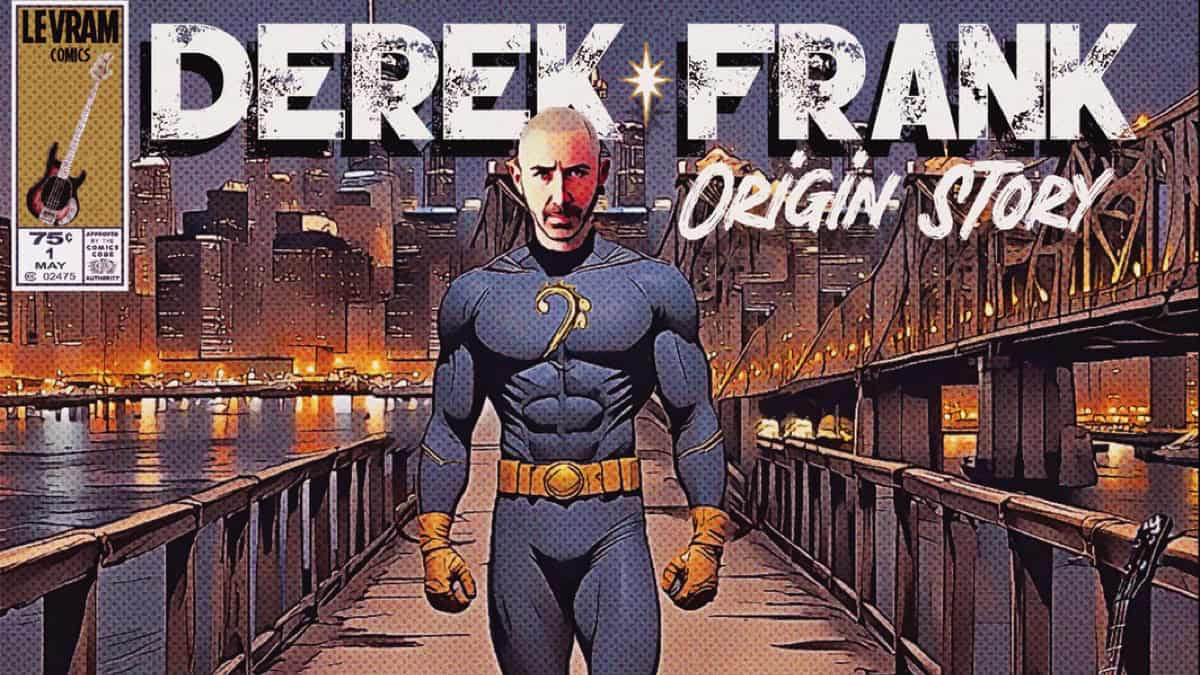Latest
Beginnings of Christian and Gospel Bass with Mark Wright

Welcome to a new series of articles about Christian and Gospel Bass.
Overview
This will not pretend to be the ultimate guide to this amazing genre of music, but rather a starting place where one can get a glimpse into part of its history, the players and music. Along the way I’ll provide interviews, resources, video examples and quotes. The next article will feature an interview with the legendary Abraham Laboriel.
These articles will focus on 2 forms of Christian music, Contemporary Urban Gospel (Black Gospel), a sub genre of Gospel and Contemporary Christian Music. This is because that’s where the great bass players, incredible grooves and wonderful music reside. How to begin? There are so many preconceived notions of what these genres are that it makes sense to start with a brief definition and peak at its history. After all, the face of Christian music has spent the last 30+ years evolving and growing. Pipe organs have been set aside for electric guitars, bass and drums.
Although I don’t want to offend anyone, the truth be told you cannot take the Gospel out of Gospel music or Christ out of Christian music anymore than you can take wetness out of water. In its simplest terms it is music and lyrics that express a heart of praise, worship and thanks to God in Jesus Christ. This is not a new phenomenon since you see it demonstrated over three thousand years ago by King David in the book of Psalms. And I’m not just talking about the words, the bass’s distant cousins of stringed instruments were a major part of worship as well.
Beginnings
King David excelled at playing the lyre; whose Hebrew name is Kinnor (????) and is first mentioned in the Bible in Gen. 4:21, where it is commonly translated harp. The lyre was the chief instrument of the orchestra of the Second Temple and was therefore held in particular honor by the Levites. According to Josephus, the first-century CE Jewish historian, it had ten strings sounded with a plectrum (used like a pick & looks like a spoon). It was box-shaped at the bottom, with two arms and a yoke, and of an approximate average height of 19 to 24 inches.
How serious were they about worship and musical instruments? In 1 Chronicles 23:5 King David commissioned a group of Levite musicians that “four thousand are to praise the Lord with the musical instruments I have provided for that purpose.” Now that’s some serious stuff!
1500’s – 1700’s
The Protestant Reformation yanked musical worship away from the professionals and put it back in the pews. Martin Luther in the 1500’s composed hymns based on popular melodies, including drinking songs. It’s a common part of church history to bring contemporary style into worship music. Hymnist Charles Wesley, one the founders of the Methodist movement, took drinking songs of the era in the 1700’s and gave sanctified lyrics to them.
In the 1600’s and 1700’s, some of the world’s greatest composers were influencing kings, culture and history with their worship music. Bach composed a Mass in all twenty-four keys! His most famous was the “B-minor Mass.” Monteverdi used dissonance while A. Scarlatti introduced the cantata (a religious musical with five to eight movements, soloists, ensembles, and choruses). Handel created the oratorio (a sacred opera with a narrator). Everyone’s familiar with Handel’s most famous religious work “The Messiah.” Mozart wrote eighteen masses. Mozart’s masses were so lengthy, however, that only portions of them can be used within the time constraints of a church service. Haydn himself penned fourteen Masses.
Image: Ancient Jewish coins bearing representations of Jewish Lyres
Spirituals
The history of Urban or Black Gospel music is predated by its African roots, in the traditions of indigenous African people. The earliest coming together of a Christian message interpreted into black music history was through the incidence of the transatlantic slave trade – the movement of African people from their customary faiths into an interpretation of Christianity.
African Americans were involved in the “Second Awakening” where the first three phases of Negro spirituals were: work songs, jubilees and social Gospel. Work songs came into being pre-1867. They were songs and chant composed by the slaves and sung largely outside church, in the cotton fields and plantations. These songs drew from Biblical imagery as inspiration through the hardships of slavery but also as coded songs of hope and freedom.
Jubilees were similar to work songs but sung in church as slaves began to embrace Christian forms of worship. They were ‘call and response’ style hymns and developed harmony as different parts sung as a group and were sang without any hymnbook. Spontaneous songs were composed on the spot that were called “spiritual songs.” The term “sperichil” (spiritual) appeared for the first time in the book “Slave Songs of The United States” (by Allen, Ware, Garrison, 1867). The last basic form was Social Gospel that is music that has a social message with biblical references.
Video: Fred Hammond with Maurice Fitzgerald on Bass
Beginnings of Modern Gospel
From 1900 through the 1930s, gospel music was attributed to the social changes in the United States where African Americans from the South were moving to other areas of the country with their own gospel music. Although predominantly an American phenomenon, Urban or Black Gospel music has spread throughout the world. After this period, noted people who are attributed to gospel music’s success came into the picture.
In the 1920s Sanctified artists, such as blind born Arizona Dranes, many of whom were also traveling preachers, started making records in a style that melded traditional religious themes with blues, boogie-woogie and barrelhouse techniques and brought jazz instruments, such as drums and horns, into the church.
Modern gospel music continued in the 1930s when Thomas Dorsey (not the big band leader), considered the ‘Father of Contemporary Gospel Music’, created songs of praise that were much more exuberant than the usual solemn church hymns. Dorsey was a former bluesman who went on to write some of the most enduring standards of Gospel music. Gospel music took flight when more artists singing in this style came out, further paving the way for the development of this musical style.
Dorsey’s songs inspired a number of Gospel and Southern American artists, including Elvis Presley. The Gospel music of the civil rights era often referred to as the Black Gospel period, defined Gospel’s richest heritage with artists like Mahalia Jackson, Sister Rosetta Tharpe, The Blind Boys of Alabama and The Edwin Hawkins Singers.
Video: Tommy Walker with Jerry Watts Jr. on Bass (solo at 6:55)
Gospel 60’s on
The financial success of secular black music in the 1960s and 70s ushered in a new kind of Gospel artist: more performance-aware yet equally spiritually and socially engaged. They included the ‘Godfather of Soul’ James Brown, Aretha Franklin, Reverend Al Green, Sam Cooke, Shirley Cesaer and The Staple Singers. It was common for these artists to choose one side of Gospel’s divide as religious and secular music industry did not mix. It also confirmed the acceptance of Gospel artists as solo performers.
In the 70s and 80s artists like the Mighty Clouds of Joy, Andrae Crouch, Commissioned and Candi Staton brought the popular sounds of disco, funk and other mainstream genres into the growing spectrum of Gospel. This era also brought to prominence some of Gospel’s biggest musical families including The Clark Sisters, The Hawkins and The Winans.
The 90s brought an R’n’B crossover explosion when Gospel artists such as Sounds of Blackness, Helen Baylor and Bebe and Cece Winans scored big international chart and club hits.
Contemporary Christian music
At the same time Contemporary Christian music first came onto the scene during the Jesus Movement revival of the late 1960s and early 1970s. One of the first, popular albums was Upon This Rock (1969) by Larry Norman. Unlike traditional or southern gospel music, this new Jesus music was birthed out of rock & roll. Some of the other pioneers of this movement included 2nd Chapter of Acts (founding member Matthew Ward will be talking with us in later articles), Love Song, Petra, Barry McGuire and many more. The small Jesus music culture had expanded into a multimillion-dollar industry by the 1980s. By the 1990s, many CCM artists such as Michael W. Smith, Jars of Clay, DC Talk, Amy Grant and Stryper had found crossover success with top 40 mainstream radio play. Currently, Christian music sales exceed those for classical, jazz, Latin, New Age, and soundtrack music.
Contemporary Christian Music can be divided into several genres and sub-genres, although the dividing lines and relationships between music genres are often subtle, sometimes open to individual interpretations. These genres like other forms of music may be distinguished by the techniques, the styles, the context and the themes, or geographical origin. Specific subgenres of CCM may include (but are not limited to): Christian rock, Christian metal, Christian punk, Christian alternative rock, Christian rap, Christian hip hop, Christian country, gospel, urban gospel, easy listening, and pop are all covered so regardless of your taste in music style, today’s Christian can find something of interest to listen to.
Video: Alvaro Lopez & ResQ Band with Abraham Laboriel on Bass
You can see by now that in many cases hymnals have been replaced by hard hitting lyrics that speak of today and a God that is fully in control of our times. Christian music has gone out of the church and can be found on radio, TV, in concert halls and at huge rallies and festivals.
Christian music boasts its own video shows, radio stations, awards, publications and web sites. The change itself hasn’t been overnight. It has taken many years. It has required sacrifices from artists who weren’t afraid to go against tradition and wanted to make music that kept up with the changing times.
Christian & Gospel Artist Speak out
Terrance Palmer: Founding member of Israel Houghton’s New Breed, founding member of Fred Hammond and Radical for Christ & Martha Munizzi. www.terrancepalmer.com
Let’s take the first word; Gospel which is the good news of Jesus Christ (birth, death and resurrection) and so now add music to it and you have The Good News of Jesus Christ through Music.
Playing bass for Gospel music or being a Gospel musician makes you a minister of the word through music. I am sure you heard the term for the head musician at a church “Minister of Music” because that’s what they are Ministers of The Gospel. We have to take what we are and what we do serious, just as the pastor has to prepare for ministry so do we as Gospel musicians. Your life style has to be one of complete surrender to God and willingness to hear what He has to say
VIDEO: Israel and New Breed with Terrance Palmer on Bass
David Dyson: Me’Shell N’degeocello, Lalah Hathaway, Marcus Johnson, Pieces of A Dream, Jonathan Butler. www.angelfire.com/me2/dysonsgroove
To me gospel music progression wise has evolved but the message is the same. It is, basically, praise oriented and uplifting spiritually but to some the category of “Christian” or “contemporary Christian” is solely worship oriented as oppose to gospel. I don’t waste time separating the vehicles of God’s moment and was raised on and saved through gospel music but play it all. Playing gospel bass has many facets but well known characteristics in this day are tuning down to a flat, being able to walk a “shout”, and having the feel for quartet songs. It is on a whole new level chop wise now too. As for a gospel musician, all you have to do is love the Lord. Though I make most of my living through contemporary secular music I never stopped playing in the house of the Lord and do so every Sunday I’m not on the road.
Vernon Barbary: Sax artist Warren Hill’s MC & bass player, Nelson Rangell, Gerald Albright, Bobby Lyle, Marion Meadows, Paul Taylor www.vbass.dannygo.com
My definition of Gospel Music – is music that focuses on presenting the Word of God through a Funk, R&B, Jazz musical style.
Marc Cooper: Award winning guitarist, songwriter & author. Joe Walsh, Seymour Duncan, Michel Cusson (UZEB), drummers Gregg Bissonette (David Lee Roth/Joe Satriani), Carmine Appice (Rod Stewart/Jeff Beck), bassist Alphonso Johnson (Weather Report /Santana), Brooks Wackerman (Infectious Grooves) & Pat Travers. www.coopdeville.com
My definition of Gospel music, or contemporary Christian worship, would have to include groove, joy, and fulfilling a higher purpose than just wanting to entertain anyone. There is absolutely nothing wrong with entertaining people, but the inner call of the musician who is playing Christian music will recognize that their audience is truly another audience. It is an audience of One. God centered worship changes the focus on everything. It changes why you are on stage… it changes who you are. For me, my principal instrument is guitar and my secondary instrument is bass… but the bass and drums have to lock and groove end of story! If that is not there, the train ain’t a moving. If I can’t feel a thing, the rhythm section hasn’t done their job.
Gerald Forrest: Drums, keyboards & bass. Head honcho @ Gospel Chops. www.gospelchops.com
My definition of gospel music is music that tells the story of the birth, life, death, and resurrection of Jesus Christ. It’s difficult to convey the many stories within the gospel with instruments alone. Lyrical content is a huge factor in gospel music because it delivers the message. However, instrumentation is paramount within the gospel genre because it can convey the mood or tone of the message. The music sets the atmosphere
for the delivery of the message. So, it all works together in gospel.
There are many gospel musicians out there who will play a gospel concert like any other gig. I think that is a big mistake, because in gospel, your goal is help, heal, and uplift someone’s spirit. So it becomes more that
just playing the notes. To be effective, gospel musicians have to tap into that spiritual element. That is definitely important for gospel bassists because we are the glue that hold it all together. We can lay back and create a mellow mood or we can push a song into overdrive.
Bass CDs
New Campaign: Alberto Rigoni, Nemesis Call – Queens Of Strings

Italian bass master and composer ALBERTO RIGONI is thrilled to announce his brand new project “Nemesis Call – Queens Of Strings”.
Nemesis Call – Queens Of Strings features a super talented drummer from Japan (TBA) and tons of female guitarists such as SAKI, Giusy Busetto, Alexandra Zerner (TBC) and many many others (TBA). Furthermore, Alberto has also launched a Fundraising Campaign for the project. 20% of the income will be donated to Lega del Filo d’Oro legadelfilodoro.it/it, an Italian association that helps deaf and blind children!
Alberto shares:
“Hello friends and music lovers! I’m Alberto Rigoni, an Italian composer and.. a BASS GUY! Between 2008 and 2024 I released 13 solo albums, spanning from progressive, rock, ambient to funky and experimental music, which also features contributions from musicians such as keyboard wizard Jordan Rudess (Dream Theater) drummer Gavin Harrison (Porcupine Tree) and Marco Minnemann (the Aristocrats), keyboardist Kevin Moore (ex Dream Theater), singer John Jeff Soto (ex Goran Edman (ex Y. Malmsteen), bassists Nathan East, Stu Hamm (Joe Satriani), Nik West (ex Prince) and many others. I’m also bass player for BAD As, Sunset Groove Society, Kim Bingham, The Italians bands and co-producer of Mistheria’s Vivaldi Metal Project.”
Alberto on the new project Nemesis Call:
“Even if my latest album “Unexpected Lullabies”, dedicated to my newborn Vittoria Parini Rigoni, will be released on June 4th, 2024, when Vittoria came to life I felt the need to compose new music (yes, I really can’t stop!!!!!). This time will be quite challenging because I’m willing to release an instrumental ambient/prog/rock/metal album, that will feature a talented and young drummer (TBA) and tons of female guitarists (that’s why I will call the album “Queens of the Strings”) such as Alexandra Zerner, YOKA and many others (TBA/TBC)). It won’t be easy to manage all such great musicians but I will make it!! Are you ready to face a new prog experience? The album will be released in Digipack CD and in high-quality digital format approximately at the beginning of 2025.”
The Fundraising Campaign:
As an independent artist, Alberto is looking for supporters who can help him reach the budget for the production (recordings, mix, mastering, artwork etc.) of this new album and has started this fundraising campaign that will end successfully on October 15th, 2024.
Get further information about the campaign at albertorigoni.net/nemesiscal
Bass Videos
Artist Update With Bassist Derek Frank

Bassist Derek Frank…
Many of you will remember the last time I chatted with Derek Frank was back in 2017. The main thing that impressed me was how busy Derek was and how he juggled playing with many huge acts.
Now, I am happy to hear that Derek launched a new album last March titled “Origin Story” where he digs deep into his roots and pays homage to Pittsburg.
Join me as we get caught up after all these years and hear the details about the new album, how Derek gets his sound, and his plans for the future.
Photo, Stephen Bradley
Featured Videos:
Visit Online:
www.derekfrank.com
www.instagram.com/derekfrankbass
www.youtube.com/derekfrankbass
www.facebook.com/derekfrankbass
Latest
This Week’s Top 10 Basses on Instagram

Check out our top 10 favorite basses on Instagram this week…
Click to follow Bass Musician on Instagram @bassmusicianmag
FEATURED @foderaguitars @bqwbassguitar @lecomptebass @xvector_basses @vuorensaku_guitars @phdbassguitars @meridian_guitars @sterlingbymusicman @ramabass.ok @overwaterbasses
Gear News
New Gear: Alberto Rigoni Signature Bass, the VPR5 by Gaetano Costanzo!

Alberto Rigoni Signature Bass, the VPR5 by Gaetano Costanzo!
Internationally renowned bassist ALBERTO RIGONI (soloist, BAD AS, Vivaldi Metal Project, TwinSpirits, etc.) is proud to announce the release of his signature bass VPR5 made by renowned Italian luthier Gaetano Costanzo!
The bass is entirely handmade in Italy, without the use of CNC or other machinery, and has rather special features. The VPR is a 5-string bass (but also available as a 4-string) with 30 frets, Seymour Duncan pickups, Music Man Alnico style, passive electronics (volume, tone and a switch to select series/parallel/single-coil mode), alder body, and American maple neck and fingerboard. Gotoh tuners that ensure perfect intonation. The bass is totally painted white (nitro finish) but other colors can be requested. The VPR has a weight of about 2.9 kg and suitable for any genre.
For more information contact Gaetanobass77@gmail.com or visit online at www.instagram.com/gaetanocostanzoluthier or www.facebook.com/GaetanoCostanzoLuthier
Bass Videos
Interview With Bassist Graham Stanush

Bassist Graham Stanush…
Return to Dust is keeping Grunge alive and well! They have a new self-titled album that went out on May 3rd, 2024 and will be super busy promoting this project in the near future.
Graham Stanush is the bass powerhouse driving their sound and adding vocals to the mix. Join me as we hear all about Graham’s musical journey, details about the new album, how he gets his sound and their plans for the future.
Featured Videos:
Visit Online:
linktr.ee/returntodust
instagram.com/returntodustband/
twitter.com/Returntodustbnd
youtube.com/@returntodustband
tiktok.com/@returntodustband









